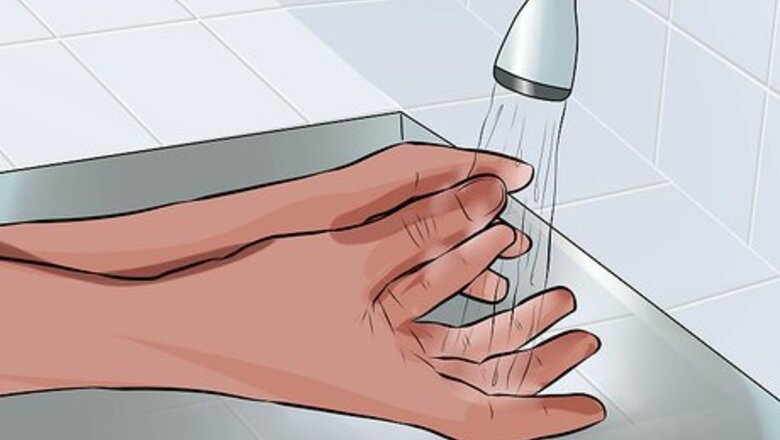
views
X
Research source
Inserting a Diaphragm Properly
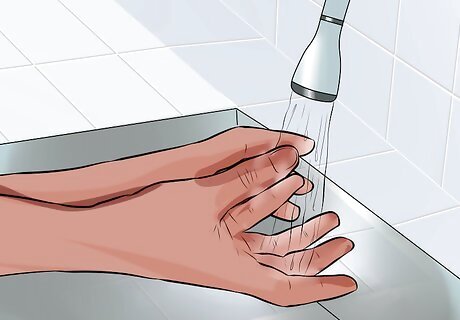
Wash your hands. Always touch and handle the diaphragm with clean hands. Your hands contain bacteria and washing them before inserting a diaphragm ensures that your vagina stays clean. Wash your hands with warm water and soap. Be sure to dry them before touching the diaphragm. You can also rinse off your diaphragm (if needed). If you need to empty your bladder, do this before washing your hands.
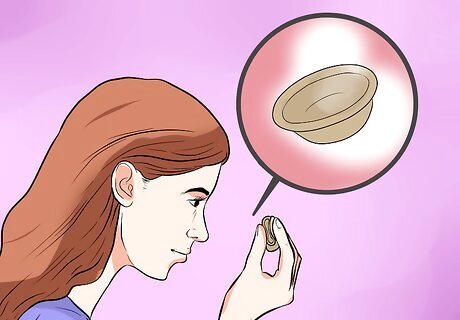
Inspect the diaphragm before use. Always inspect the device before use to make sure it doesn’t have holes or tears. Hold your diaphragm up to a light source to have a clearer view during inspection. Gently stretch the diaphragm at the area of the rim on all sides. This helps ensure that there are no holes or tears in the device. You can also check for tears or holes by pouring water inside the diaphragm. No leaks should be observed. If you see leaks, do not use the diaphragm and use another contraceptive method.
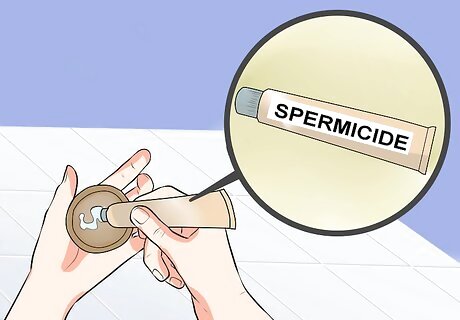
Apply spermicidal cream on the diaphragm. Never forget spermicides (jelly or cream) before inserting the diaphragm, otherwise the effectiveness of the diaphragm is reduced. Add at least a tablespoon of spermicidal cream inside the dome of the diaphragm. Spread the spermicide over the rim and dome with your finger. Always follow the instruction in the spermicidal package as the different products are used slightly differently.
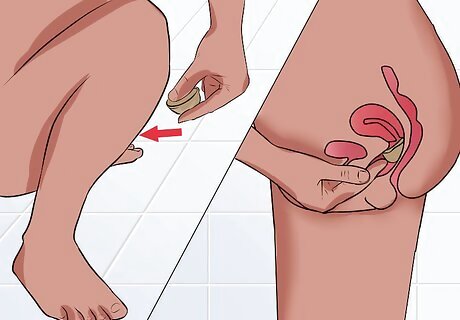
Find a comfortable position to insert your diaphragm. You can insert a diaphragm by standing with one foot resting on a chair, lying down with knees bent and feet apart, or squatting down. Try the different methods to find the best method for you. Once you have found the comfortable position, locate your cervix (the opening that leads to your uterus). You can feel your cervix at the end of the vaginal canal. This is where you need to insert the diaphragm.
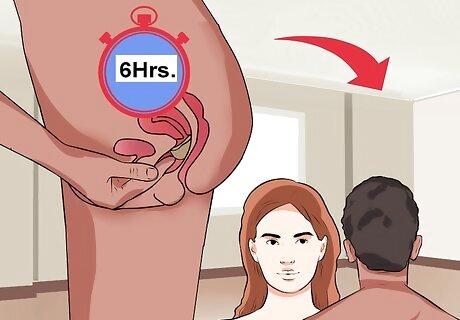
Insert your diaphragm up to six hours before intercourse. Pinch the diaphragm between your fingers and thumb and hold the diaphragm so that the inside of the dome (and the spermicide in it) is facing your vagina. Separate the lips of your vulva and push the diaphragm all the way into the vagina until it reaches the cervix. Make sure the front rim is tucked under the pubic bone and that the diaphragm covers the cervix snugly. If it feels loose, then you might have the wrong fit. Consult your doctor if you think you need a different size.
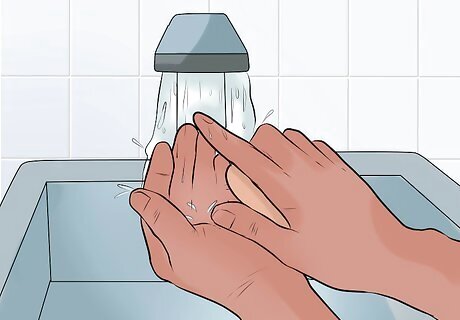
Wash your hands after the diaphragm has been placed. Washing your hands will remove bodily fluids and spermicide and should always be done before and after inserting or removing a diaphragm.

Add more spermicide (if needed). If intercourse should happen again within a few hours after the first act, additional spermicidal cream should be applied without removing the diaphragm in between. You should also add more spermicide if you insert your diaphragm hours before having intercourse. Most spermicide products come in a tube with an applicator tip. Simply insert the applicator as far as you can without discomfort to make sure you reach the cervix, and then squeeze the tube to insert one tablespoon of spermicidal cream into your vagina before intercourse.
Caring for and Removing Your Diaphragm
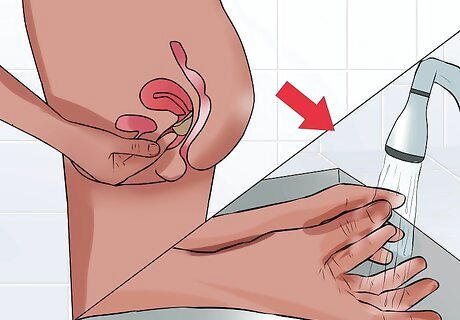
Wash your hands. Always wash your hands before and after inserting or removing a diaphragm. Proper hygiene helps maintain your diaphragm longer and prevents vaginal infections.

Wait for at least 6 hours after intercourse before you remove the diaphragm. Do not remove the diaphragm immediately after intercourse as this can lead to unwanted pregnancy. You should not leave the diaphragm in for more than 24 hours. This is unhygienic and can lead to serious complications, such as toxic shock syndrome.
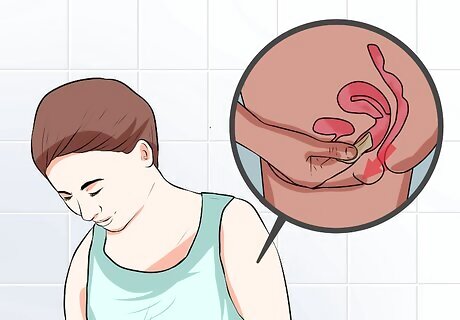
Locate and remove the diaphragm. Insert your finger inside your vagina and locate the top rim of the diaphragm. Hook your finger firmly on the upper rim and break the suction. Pull the diaphragm out with your finger. Be careful not to tear a hole in the diaphragm with your fingernails.

Wash the diaphragm with warm water and mild soap. Always clean the diaphragm after use to remove bodily fluids and spermicide. Do not use strong and perfumed soaps because it may weaken the rubber. After washing, allow the diaphragm to air dry. Do not use a towel to rub the diaphragm dry as this can lead to tears. If you'd like, you may dust it using cornstarch, but remember to rinse the diaphragm before next use. Avoid products such as baby powder, body powder, or face powder, Vaseline or hand creams. These can damage the diaphragm rubber.
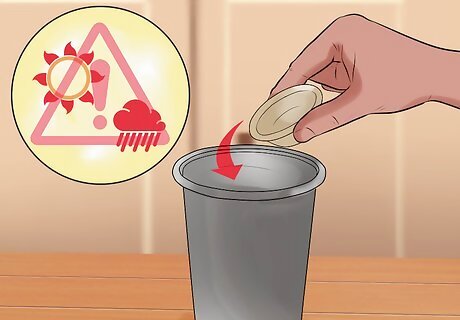
Store your diaphragm in a container in a cool dry place. With proper care, the diaphragm can last up to two years. This includes storing it in its container and avoiding exposure to hot or wet environment. Also avoid placing the diaphragm in direct sunlight as this can heat the rubber and impair the integrity of the device.
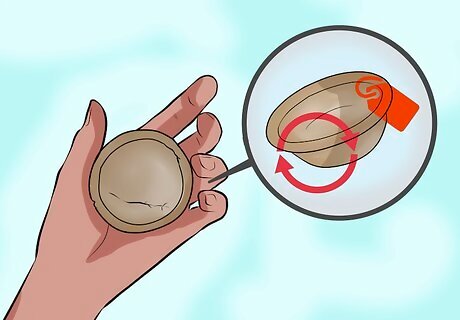
Replace the device after one to two years or upon the advice of your healthcare provider. If the diaphragm breaks or tears before it is time to replace it, contact your healthcare provider and ask for a new device. If you notice any damage in your diaphragm, do not use it. Also, if you have any doubt about the integrity of the device, it is better not to use it.
Selecting the Right Diaphragm

Choose the right diaphragm. Choosing the right type of diaphragm is important. Currently there are three types of diaphragms to choose from. Arching spring diaphragm: this is the most common and easiest type of diaphragm to insert. This type of device has two hinged points that form an arc for easy insertion. Coil spring diaphragm: this has a soft flexible rim but it does not form an arc when you fold it. Women with weaker muscle tone of the vagina can take advantage of this. This type of diaphragm comes with an introducer tool. Flat spring diaphragm: this is similar to the coil spring diaphragm, but it has a thinner and more delicate rim. You can also insert this type of diaphragm with an introducer tool. A flat spring diaphragm is better used by women who have stronger vaginal muscle tone Diaphragms are made with silicone or latex. Silicone diaphragms are less common and must be ordered from the manufacturer. Caution: If you are allergic to latex use silicone diaphragm instead. If you experience an allergic reaction (rash, itching, flushing, restlessness, difficulty breathing, or loss of consciousness) seek medical assistance immediately.

Choose the correct fit. Proper fitting of the diaphragm is vital to ensure effectiveness. If you use poorly fitted diaphragms, it can slip during intercourse and lead to pregnancy. For diaphragms that do not have a dome, you can use fitting rings to find the proper fit. These can be ordered from the manufacturer. You can also get fitted by your doctor who can also help you choose the proper diaphragm. This is especially helpful if this is the first time you are using a diaphragm. If you schedule an appointment with your doctor, the procedure takes around 10-20 minutes and you may experience some discomfort during the fitting. After the doctor knows the right measurement, she will also teach you how to insert the diaphragm by yourself. You may need to refit your diaphragm after weight loss, weight gain, childbirth, and/or miscarriage.

Know when it is safe to use a diaphragm. It is important that you inform your healthcare provider regarding any past health conditions (such as allergies, and uterine and pelvic disorders) that may impact your ability to use a diaphragm. If you are not a good candidate for this type of contraception method, other alternatives are available. Consult your doctor about the different contraceptive methods available for you.

Know the advantages and disadvantages of using a diaphragm. When it comes to contraception, there are numerous methods to choose from. Knowing the pros and cons of using a diaphragm is vital and allows you to choose the proper contraceptive method for you. Unlike hormonal contraceptives, diaphragms do not produce hormonal related side effects or risks. Diaphragm does not interfere with intercourse and can be inserted several hours before intercourse begins. You are in control of your contraception. During the insertion process, using diaphragms can become uncomfortable because some women are not comfortable touching themselves. Cases of diaphragm dislodgement during intercourse may result to unwanted pregnancy. Diaphragms do not protect against sexually transmitted diseases. Women using diaphragms are at higher risk for urinary tract infections. Note: UTIs respond easily to medical treatments. If you have a UTI or experience frequent UTIs, seek medical attention. Urethritis (infection of the urethra) and recurrent cystitis (infection of the bladder) can be caused by upward pressure of the diaphragm rim against the urethra. Diaphragms increase the risk of toxic shock syndrome especially if used improperly. To prevent toxic shock syndrome, use proper hygiene methods before inserting or removing your diaphragm and do not leave your diaphragm in for more than 8 hours after sexual intercourse

















Comments
0 comment